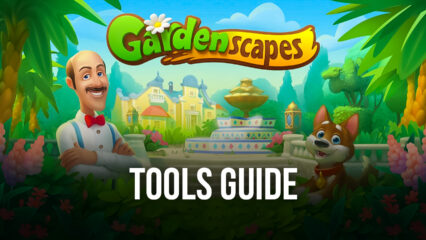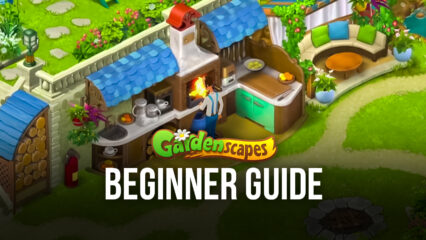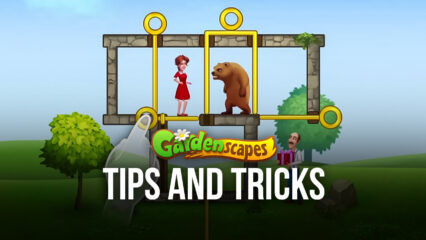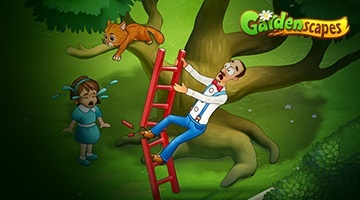Gardenscapes Guide: Advanced Interactions

In traditional Match-3 games, every move you make has a corresponding effect. Gardenscapes uses the same fundamentals to make sure that the player is getting the most out of playing this game and doesn’t have to learn more stuff in a tried and tested formula. It’s understandable that most players wanted to skip the tutorials and just play the game how they want to, but if you’re aiming for the big leagues, you’ll need to understand how each and every move you make affects the puzzle board.
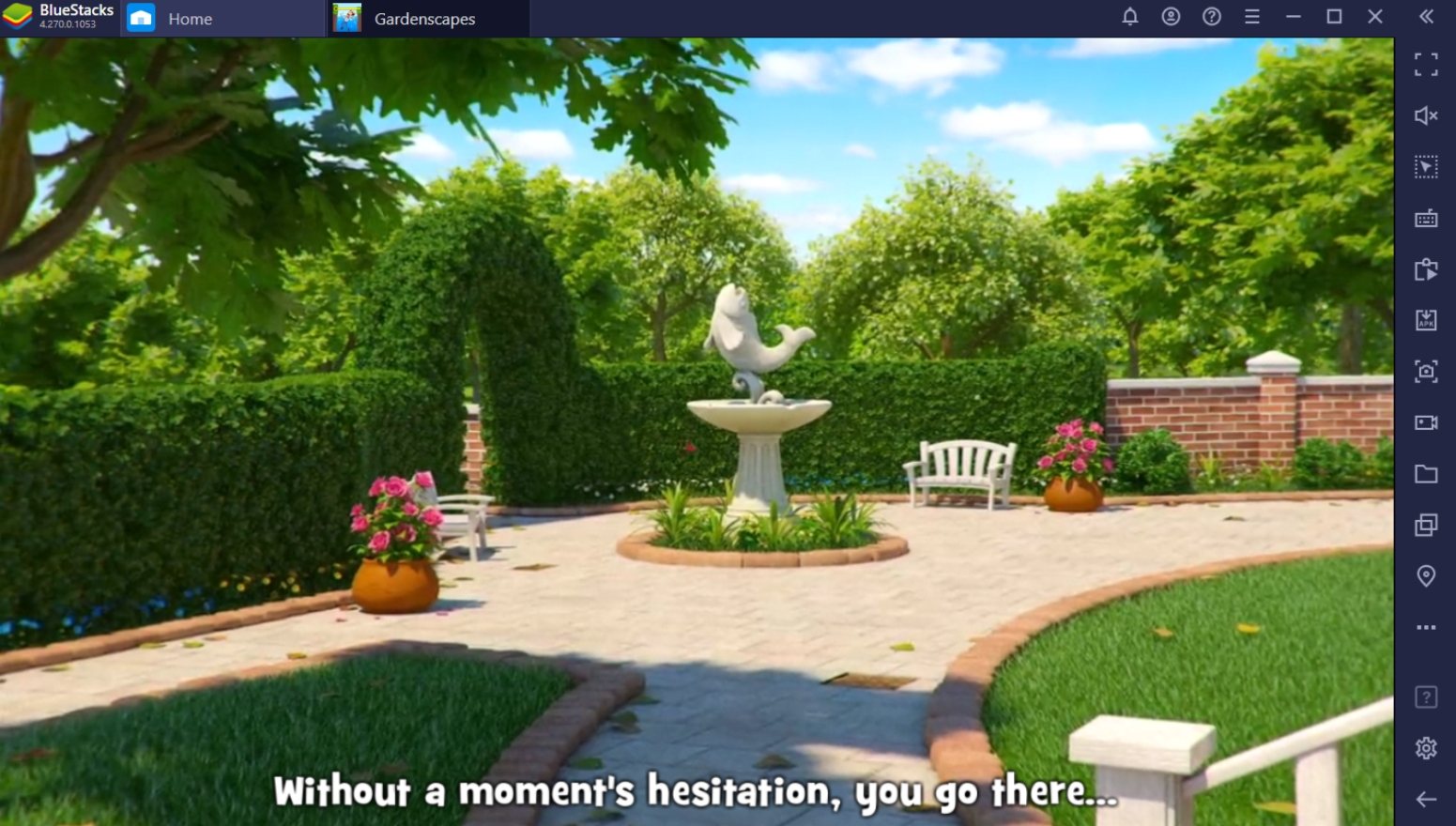
Gardenscapes uses some elements common to all Match-3 games but is reskinned to fit the theme. Even though they might look different, there’s a certain way these things will interact when the players make a move. Let’s take a look at some of the advanced interactions that the game has that players might have missed out on while playing the tutorial. While we’re at it, we’ll talk about what the best approach is when trying to fulfill or complete the requirements towards completing the goal.
-
Explosives
Explosives appear when a player completes a combination. Depending on the number of pieces you combine using one piece of the same type with one move, you’ll create a corresponding explosive to appear on the piece you just moved. These explosives can be detonated by moving them to an adjacent block or by double-tapping them in place. Moving an adjacent piece towards the explosive or detonating an explosive near another explosive will also cause it to get detonated.
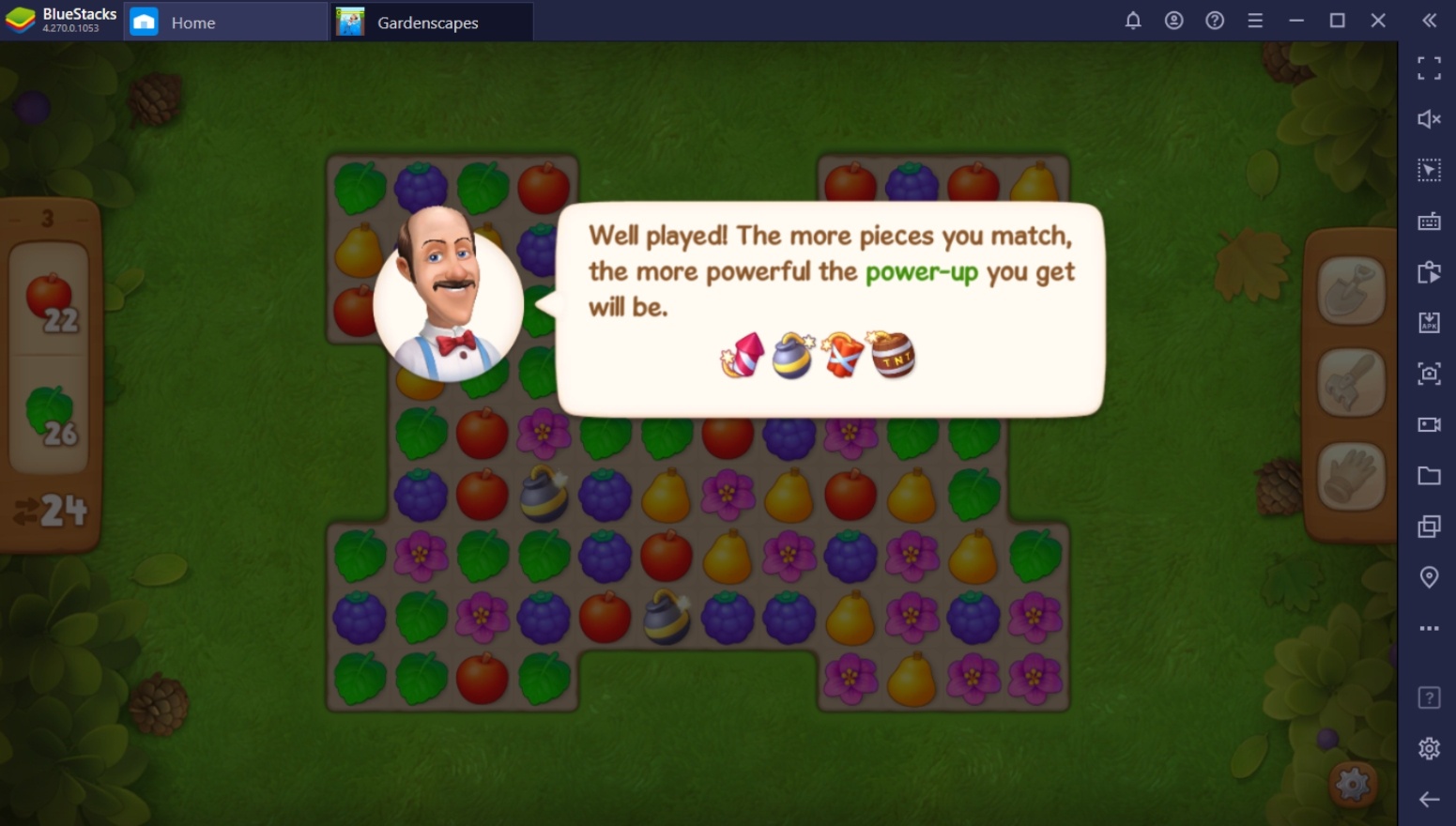
- Firecracker – Match 4 pieces, cross-section explosion.
- Bomb – Match 5 pieces, 2-tile radius
- Dynamite – Match 6 pieces, 3-tile radius
- TNT – Match 7 pieces, 4-tile radius
Explosives are one-time use pieces, but they have a huge impact. The best way to use these explosives is by placing them as close as possible to hazards or general pieces that are tedious to get rid of. The only thing that an explosive will not be able to destroy is a Rainbow Blast since it’s considered an indestructible object. A rookie mistake that some players make is that they use Explosives every chance they have. Try to determine when an explosive is best used and when that move will aid you towards completing the goal.
-
Rainbow Blasts
Rainbow Blasts are chargeable power-ups that you can use to clear the board of one piece of your choosing. To create Rainbow Blasts, you need to detonate explosives or use power-ups in the game as much as possible. The bigger the explosive that you use, the more energy it will charge up on your Rainbow Bar. Once you’ve completely charged your Rainbow Bar, the Rainbow Blast will appear at a random place on your board.
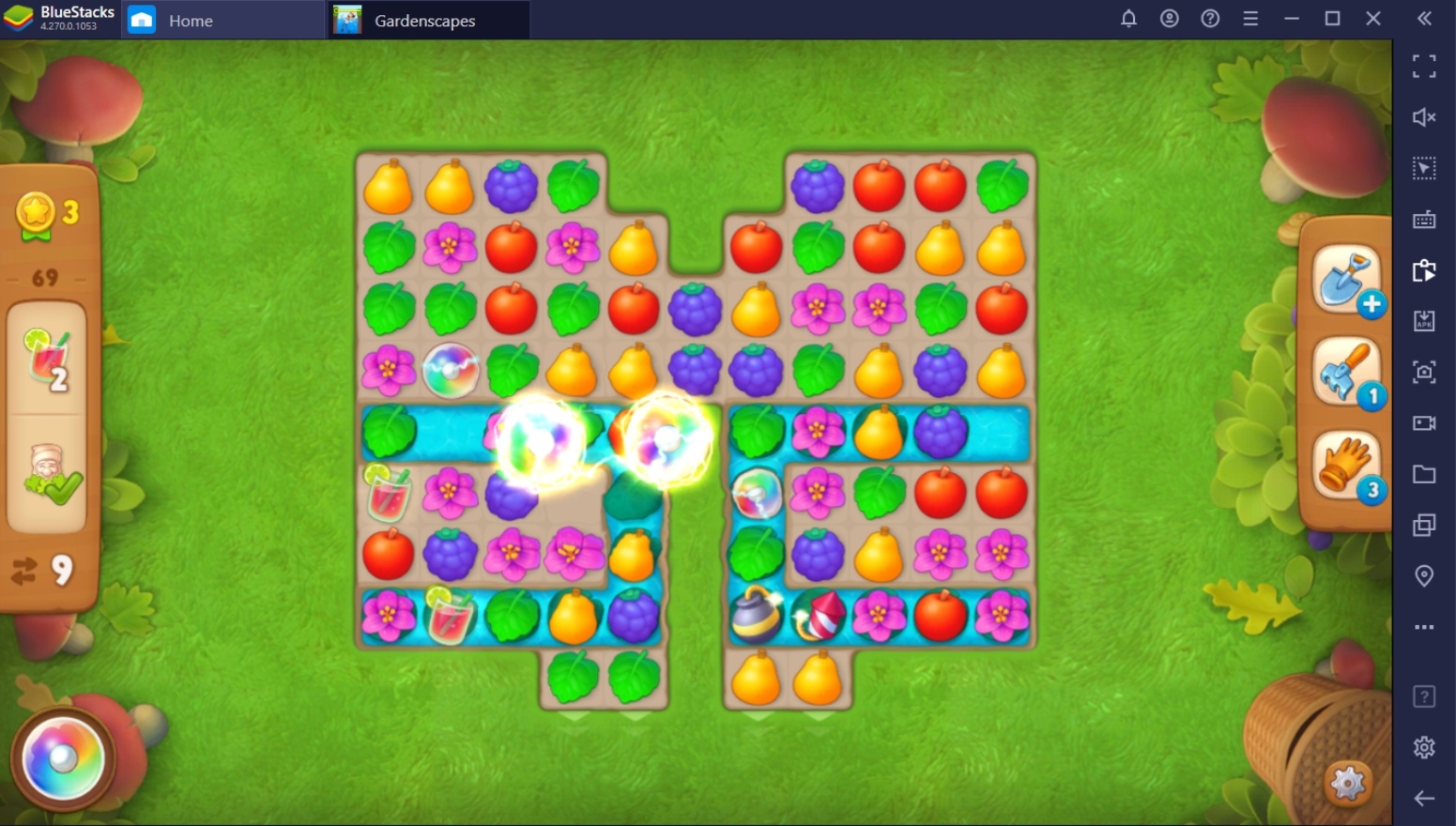
The Rainbow Blast has two unique interactions. The first interaction is that you can combine two adjacent Rainbow Blasts to clear one layer of the entire board in one go. However, Rainbow Blasts can’t be used on other hazards or explosives since switching places with an explosive will simply cause them to detonate in place. The second interaction is that – in spite of the first interaction – you can use the Rainbow Blast on Acorns, even though Acorns are considered hazards in the game.
-
Obstacles
Obstacles are non-destructible objects that try to make the game more challenging by limiting or changing the way pieces move around the board. Some examples of obstacles in Gardenscapes are Lily Pads, Portals, Fences, and a few others. There is no way to remove these from the board, but you can use some of them to your advantage while others will simply require you to move around them. They might seem tedious, but they add an extra layer of difficulty to games like this.
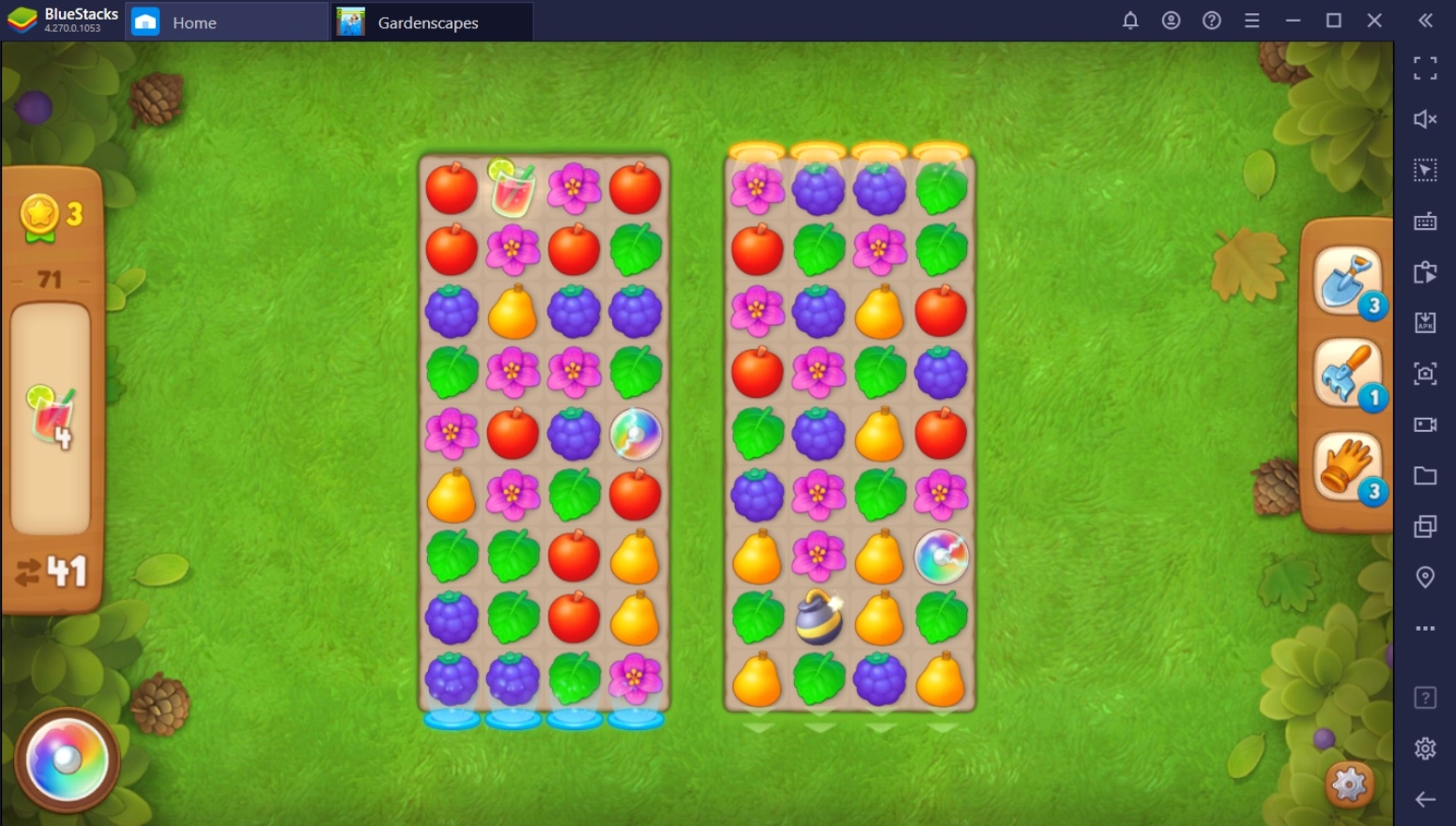
To conquer obstacles, you need to understand how each of them acts on the board. Some obstacles, like the Lily Pad, may work in your favor as they can deliver pieces around the board while you focus on achieving other minor objectives. Never try to force your way through an obstacle; rather, try to treat it as an alternate route. The last thing you want to do is get upset over trivial details that only exist in the game.
-
Destructibles & Hazards
Destructibles and Hazards are pieces on the map that are similar to obstacles but can be removed in a few different ways. The first type of destructible includes the terrain blockers, which are the objects that try to separate or cover a goal or an area of the map. These include Crates, Acorns, Hoses, and Stones. Luckily, the best way to remove them is by matching pieces beside them or by detonating an explosive in their area.
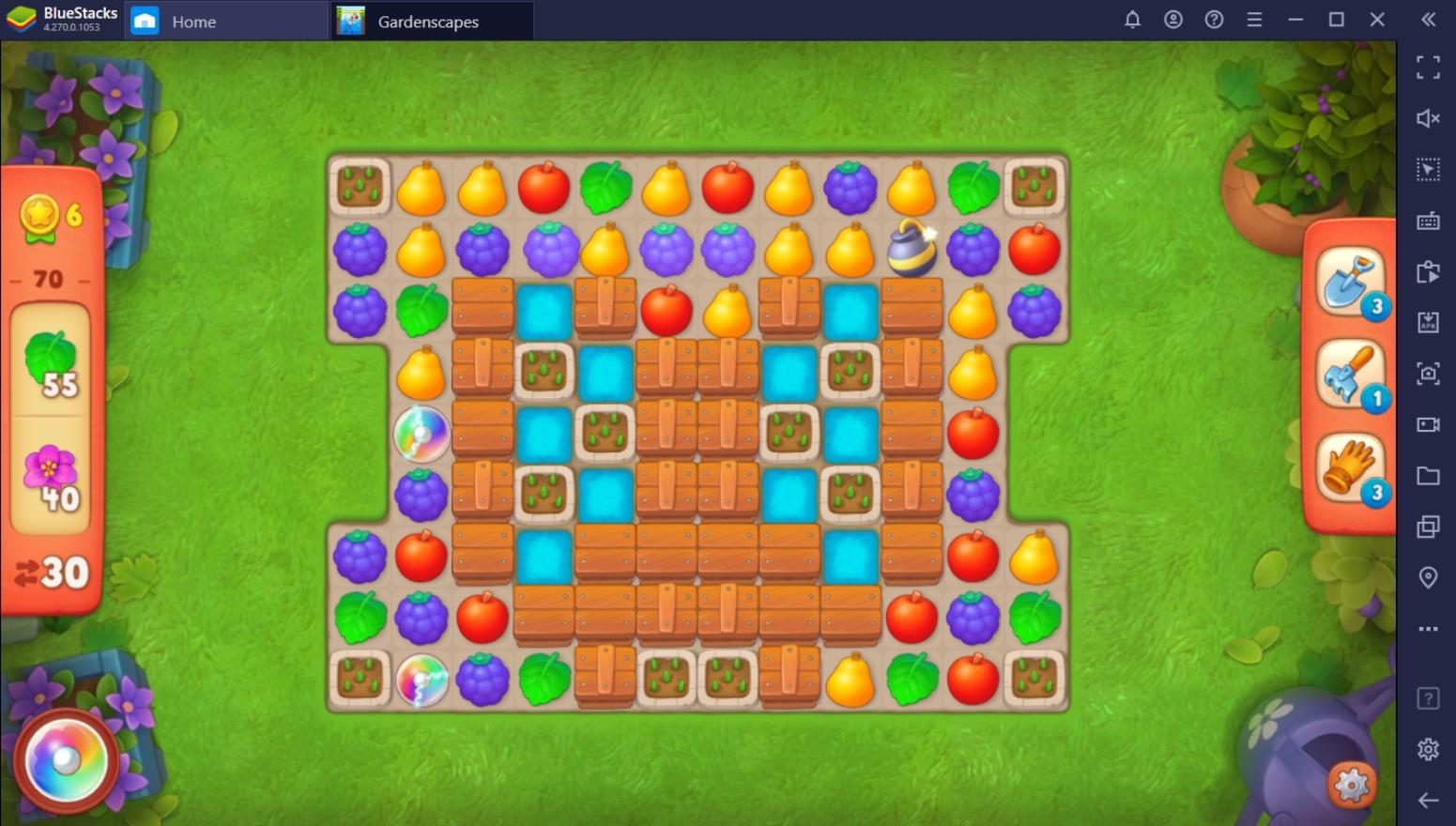
The next type is piece lockers. These are destructibles that limit the movement or interaction with a certain piece. These destructibles look different, but all act the same way. Simply matching the piece trapped inside with a piece on the outside or detonating an explosive near it should free them up. Destructibles and Hazards may also become fortified, meaning it takes more than one move to get them out of their lock.
-
Goal Pieces
The final interaction element in Gardenscapes is the Goal Pieces, which are the requirements you need to submit in order to complete the stage. Each Goal Piece has a unique way of being completed. For example, the most basic one – Garden Gnome – requires you to unlock it by getting rid of the leaves/grass that’s covering it. Other goal pieces require a more creative approach towards completion and will truly test your patience and wittiness to achieve.
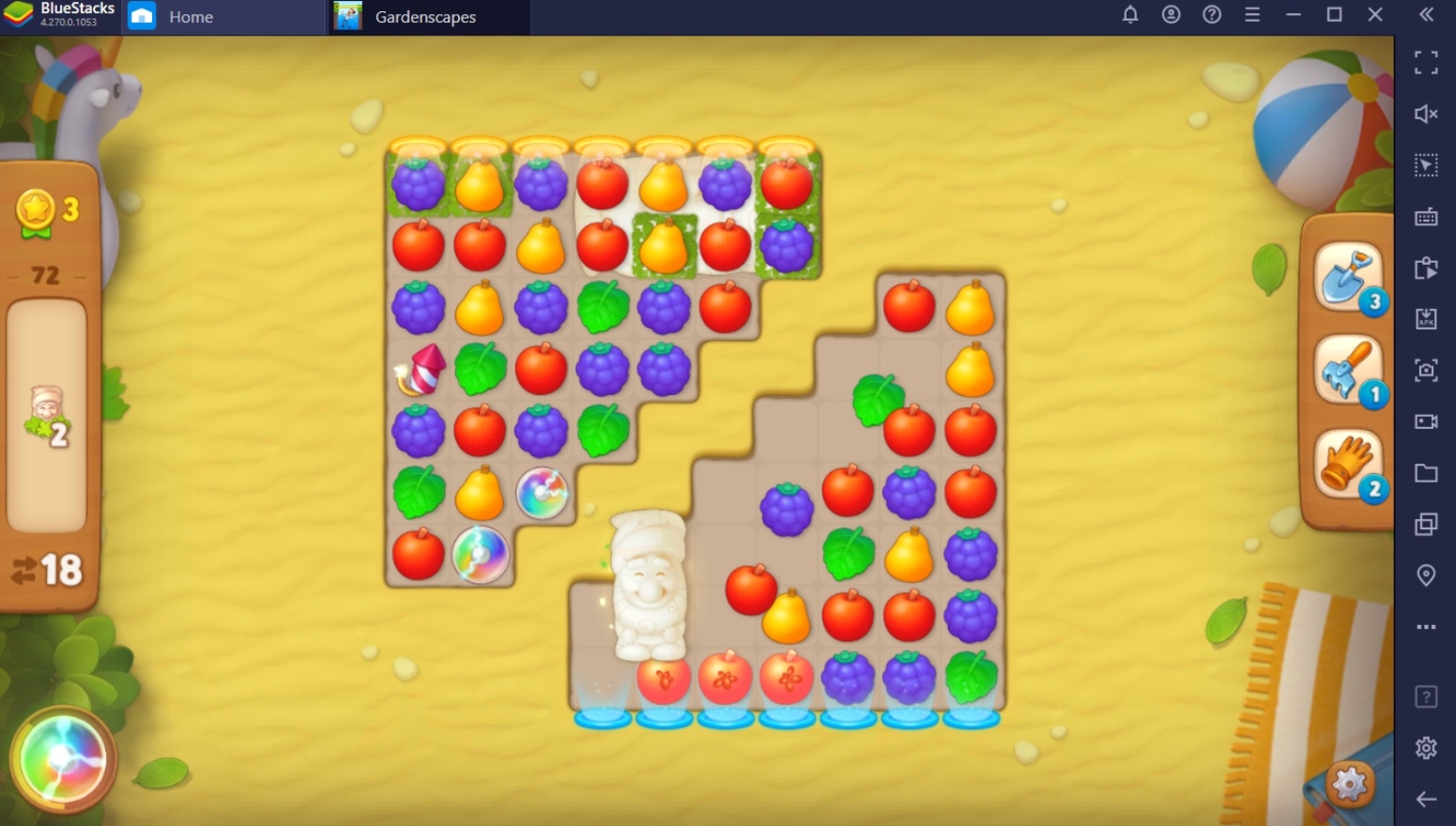
In stages that require multiple goal pieces to be completed, the best approach is to try to achieve as many goals as possible in one move. The game isn’t simply going to allow you to take your time by completing one goal at a time. The limited moves will be your worst enemy, and sometimes, you’ll need some help to be able to clear these things. Check out our Gardenscapes Tools & Powerups Guide so that you can figure out the best situations to use your power-ups without wasting them.


